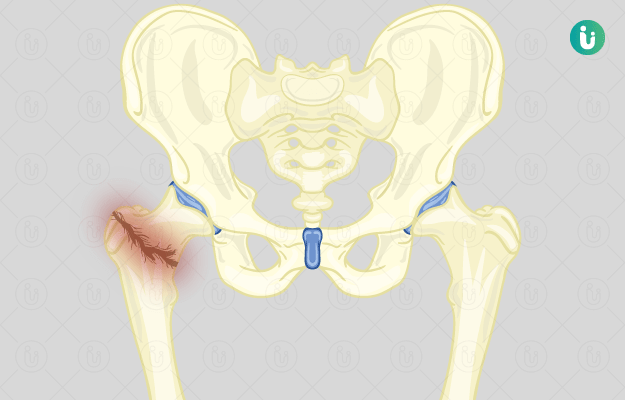What is a fractured hip?
A fractured hip is a break in the bones that form your hip joints. The hip forms the upper quarter of the femur (thigh bone) near the pelvis, and can lead to life-threatening complications when fractured. A majority of the hip fractures occur amongst women and people aged over 65 years because of weak bones.
What are its main signs and symptoms?
Common symptoms include:
- Pain in the upper thigh or groin area
- Severe swelling and bruising at the fracture site
- Discomfort and difficulty in movement of the hip
- Difficulty in walking
- Inability to put weight on the affected hip
Other uncommon symptoms include:
- The affected hip may be rotated towards the outer side or deformed
What are the main causes?
Some of the most common causes include:
- Trauma or accidents causing a direct blow to the hip bone. Older people may get a hip fracture simply by twisting their leg or by standing for too long because of weaker bones but it can generally affect any age group if trauma is involved.
- Falling from a standing height is often the cause for hip fractures in older adults.
- Certain medical conditions are seen to be associated with fractures. They make weaken the bones (deficiency of vitamin D and calcium, osteoporosis, overactive thyroid) or increase the risk of falls (dementia, Parkinson’s disease).
- Drugs like corticosteroids weaken the bones, while sedatives and antipsychotics are associated with falls.
- Habits like chewing tobacco or drinking alcohol are linked with weaker bones and poor bone healing.
- Physical inactivity and a sedentary lifestyle are associated with lower bone density and weakness.
How is it diagnosed and treated?
Careful history, assessment of symptoms and physical examination aid in diagnosis.
Diagnosis is easily confirmed by X-rays. An MRI or CT scan may be required for detailed assessment.
Treatment depends on the area and type of fracture. Hip fractures usually require surgery to correct.
In case of serious medical conditions, surgery may have to be avoided and only symptomatic relief and care is given.
Only in certain rare cases, surgery may be avoided and the patient is recommended complete bed rest and immobilisation.

 Doctors for Fractured Hip
Doctors for Fractured Hip 


















